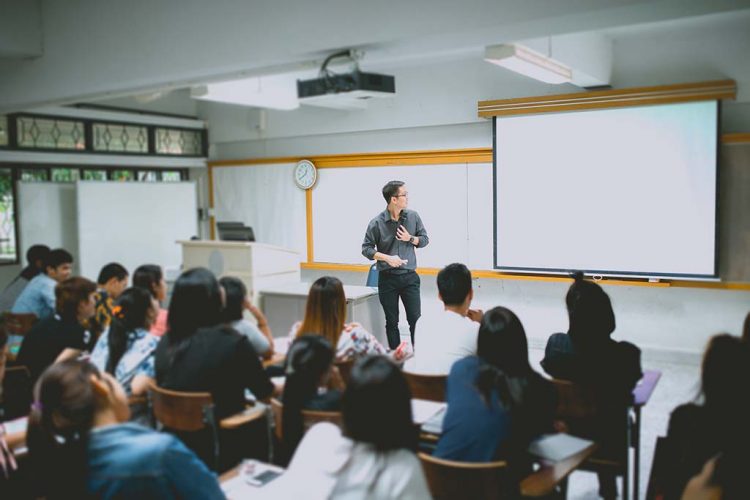Get Top Results with Primary Science Tuition Singapore from Experienced Tutors
Get Top Results with Primary Science Tuition Singapore from Experienced Tutors
Blog Article
Discovering the Different Training Techniques in Key Scientific Research Education Today
The landscape of main scientific research education is progressing, with different training approaches gaining importance in contemporary class. Inquiry-based knowing, hands-on experiments, and the combination of innovation are redefining just how teachers involve young minds. Furthermore, joint strategies and differentiated guideline are being used to satisfy the varied demands of trainees, enhancing both involvement and understanding. As we check out these approaches, questions arise about their performance and the implications for future instructional practices. What might these shifts in method mean for the following generation of students?
Inquiry-Based Learning
Inquiry-Based Discovering (IBL) is an instructional approach that motivates trainees to discover scientific principles via doubting, examination, and hands-on testing. This approach emphasizes the role of students as energetic individuals in their learning, promoting critical reasoning and problem-solving skills. By involving with real-world inquiries, pupils become inspired and curious, which enhances their understanding of clinical concepts.
In IBL, teachers serve as facilitators, leading pupils as they browse their queries instead than providing information directly. This student-centered approach permits distinction, suiting various discovering paces and designs. Students establish abilities in formulating hypotheses, making experiments, and evaluating data, which are critical for clinical proficiency.
Furthermore, IBL promotes cooperation among students, motivating them to share searchings for and ideas. This collective query promotes social abilities and a feeling of area within the class. In addition, the process of questions encourages resilience, as students learn to welcome failure as a stepping rock toward understanding.
Hands-On Experiments
Hands-on experiments are a crucial element of efficient science education, complementing the principles of inquiry-based learning. These experiments enable trainees to involve directly with scientific ideas, fostering a much deeper understanding through experiential understanding. By controling materials and observing end results, young learners can realize abstract theories in substantial ways.
Such activities promote crucial reasoning and analytical abilities, as pupils assume outcomes, conduct experiments, and analyze results. This process urges them to ask concerns, fine-tune their understanding, and establish a clinical mindset. Hands-on experiments can be tailored to diverse understanding designs, ensuring that all trainees have the possibility to involve meaningfully with the web content.
Additionally, hands-on experiments frequently motivate collaboration among peers, promoting teamwork and interaction skills. Working in teams allows pupils to share ideas, go over searchings for, and learn from one another, which enhances their general educational experience.
Incorporating hands-on experiments into the primary science curriculum not only enhances the discovering setting yet also grows a long-lasting interest in scientific research. By proactively taking part in their education and learning, trainees are most likely to establish an interest for clinical inquiry that prolongs beyond the class.

Innovation Integration
Integrating modern technology right into key scientific research education and learning has come to be increasingly crucial in promoting student engagement and enhancing discovering outcomes. The usage of digital tools, such as interactive simulations, digital labs, and educational software application, supplies trainees with possibilities to discover scientific principles in innovative methods. These resources assist in a much deeper understanding of complicated topics by enabling students to visualize and manipulate variables that would certainly be unwise in a traditional class setup.
Moreover, innovation assimilation encourages customized finding out experiences. Trainees can advance at their own pace, revisiting tough ideas through multimedia sources, which deal Web Site with different learning designs. This versatility not just supports individual growth however also cultivates a sense of autonomy in learners.
Additionally, technology acts as a bridge to real-world science, connecting pupils with current research study and expert payments. Accessibility to online data sources and clinical journals expands trainees' viewpoints on clinical questions and fosters important assuming skills.
Collaborative Learning
Collaborative learning plays an important duty in key scientific research education by fostering synergy and interaction abilities among students. This approach motivates learners to collaborate, share expertise, and participate in problem-solving, which boosts their understanding of clinical concepts. By participating in group activities, students learn to express their concepts, listen to diverse viewpoints, and discuss options, every one of which are vital abilities in both academic and real-world contexts.

Study indicates that collective knowing can lead to enhanced inspiration and engagement in science topics, as pupils discover enjoyment in common experiences (primary science tuition Singapore). Furthermore, this strategy prepares pupils for future collective ventures, equipping them with the abilities required for efficient team effort in higher education and specialist atmospheres. Ultimately, embracing collaborative understanding in main scientific research education can substantially enhance the understanding experience and advertise a deeper understanding of clinical inquiry
Differentiated Guideline

Differentiated guideline can show up in various ways, such as differing the material, processes, or products of learning. For example, teachers may utilize tiered tasks that provide varying degrees of intricacy, allowing pupils to operate at their particular preparedness degrees. Additionally, adaptable grouping strategies can help with partnership amongst trainees with various abilities, promoting peer understanding.
Evaluation plays a crucial role in this strategy, as it educates direction and helps instructors understand each student's special requirements. Developmental analyses, such as monitorings and quizzes, can lead instructors in readjusting their methods to improve learning outcomes. primary science tuition Singapore. Inevitably, by carrying out set apart instruction in key science education and learning, teachers can her comment is here grow a more efficient and fair learning setting, empowering all pupils to reach their full capacity in comprehending scientific phenomena
Verdict
In summary, the diverse teaching strategies in key scientific research education and learning, consisting of inquiry-based understanding, hands-on experiments, technology combination, collaborative learning, and separated guideline, collectively add to a much more efficient discovering setting. These techniques promote important reasoning, analytical abilities, and a much deeper understanding of clinical ideas. By carrying out these techniques, instructors can develop supportive and interesting classrooms that resolve the different needs of trainees, inevitably fostering a lifelong passion in scientific research and enhancing scholastic accomplishment.
Inquiry-Based Understanding (IBL) is an instructional technique that encourages trainees to discover scientific principles with questioning, examination, and hands-on trial and error.Collaborative learning plays an important duty in main science education by promoting team effort and communication skills amongst pupils.Research study suggests that collaborative understanding can lead to raised inspiration and interaction in scientific research topics, as students discover pleasure in shared experiences.In fostering an inclusive understanding setting, separated direction arises as a crucial method to fit the varied needs and abilities of pupils in key science education and learning. Eventually, by executing separated direction in key science education, teachers can cultivate a more fair and reliable knowing atmosphere, encouraging all pupils to reach their complete potential in comprehending scientific sensations.
Report this page